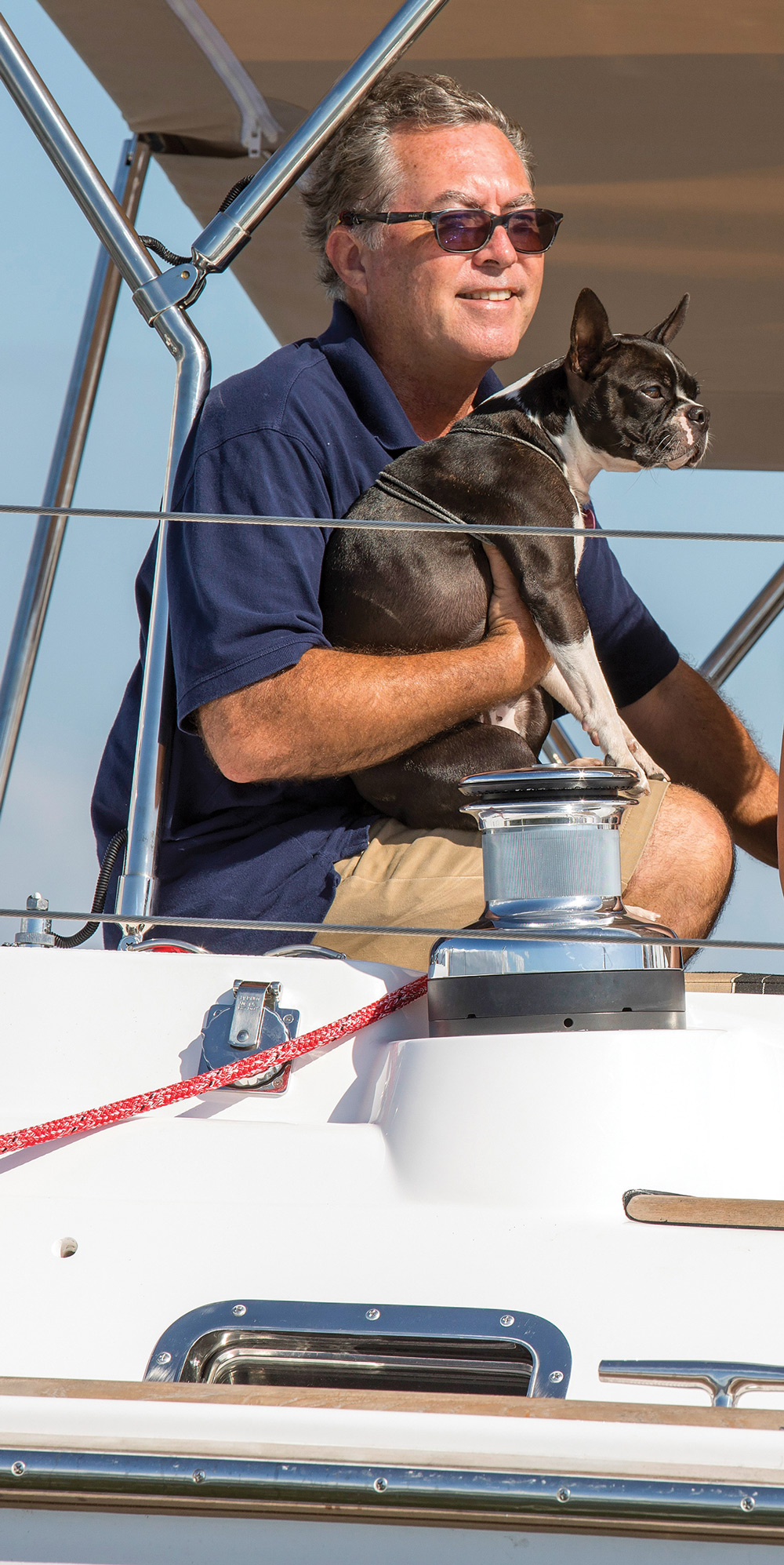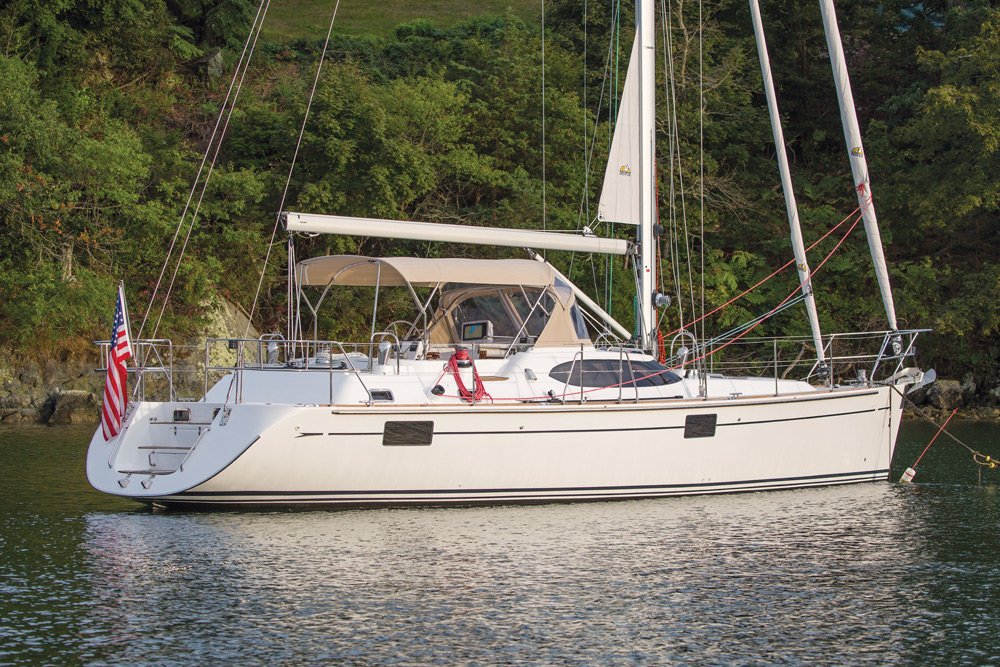Made for the sea
The Hylas 48 is a robust offshore passagemaker tricked out with creature comforts, sophisticated systems and a seakindly nature
It’s not every day that you sail with a Boston terrier as a bo’sun, which made it a nice surprise when Bikini peeked her head out of the cockpit as I boarded the brand-new Hylas 48 at Mears Marina in Annapolis, Maryland. She was anxious to get underway, and I couldn’t wait to put this new Dixon-designed passagemaker through its paces.

Bill Dixon has designed a shapely hull and deck with wraparound windows that help minimize the look of the tall deckhouse and center cockpit. With a 42-foot waterline and a 14-foot 6-inch beam that is carried aft there is plenty of room for accommodations.
It was a hot and sticky morning in early October following the U.S. Sailboat Show, but there was hope that the wind would fill in. In the meantime, Christian Pschorr, service director for Hylas, showed me around Hull No. 1, which had recently arrived in the U.S. from Queen Long shipyard in Taiwan where Hylas Yachts have been built since 1985. The family-owned company has built more than 500 Hylas yachts, and the 48 joins a long list of semi-custom oceangoing cruisers built of hand-laid fiberglass known for their durability. Below the waterline, the 48 has two epoxy barrier coats and three coats of bottom paint. The beefy construction also includes fore and aft watertight bulkheads.
“The yard continues to improve its building techniques in a conservative way, and the 48 has some composite bulkheads to keep it light and strong,” Pschorr said.
The H48 has a solid-lead 6-foot 6-inch fin keel and the rudder is mounted on a semi-skeg. In a departure from previous models, the H48 has a saildrive, which allows the engine to move forward in the boat for better weight location and to reduce vibration when under power.
On deck
The side decks were wide and free of clutter and I found it easy to make my way to the foredeck. Fiberglass nonskid is standard, but Pschorr said about 15% of owners opt for teak.
Hull No. 1 was fitted with a Selden rig with three slightly swept spreaders and an in-mast-furling mainsail. All boats come standard with Doyle sails. The boat also was fitted with the optional furling self-tacking jib/staysail on an inner forestay and the genoa was on the optional Furlex electric roller furler tacked to the stem. A code zero can be flown from an optional sprit. The beefy stem fitting featured a double anchor roller and a Maxwell windlass, and the bow was covered in a protective stainless cover. The anchor locker had enough room for two anchor rodes.
All hardware and winches are Lewmar. The boat comes standard with four dorade vents for good ventilation below. Lines run aft from the mast to a bank of clutches on the starboard side. The large cockpit has wraparound seating with jaunty navy-striped cushions, and there was room for a crowd to dine around the cockpit table that folds flush against the steering pedestal, opening up access to the companionway.
The pushpit is stainless tubing that runs the full length forward to the side gates for extra safety. It’s a step down from the cockpit to the aft deck area that features cavernous lazarettes and access to the rudder post where a full-size emergency tiller can be set up. There are two steps down to the swim transom and ladder, which has four stainless grabrails to assist when boarding the tender. The H48 comes with a second boarding ladder that attaches at the side decks that is two part: used full length for boarding from a dinghy or shortened to use for reaching low finger piers.


Comments